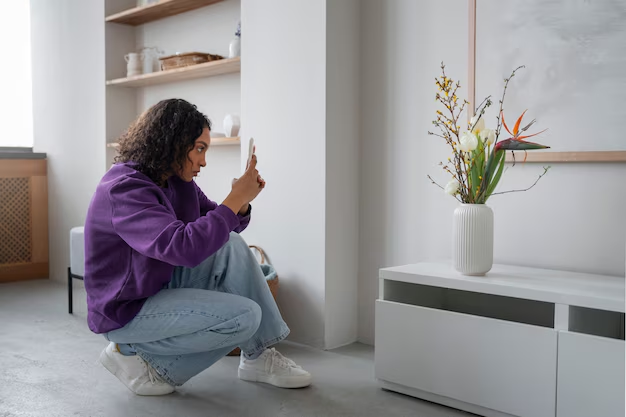How to Easily Level Your GE Side-by-Side Refrigerator for Optimal Performance
Your GE side-by-side refrigerator is an essential part of your kitchen, helping keep your food fresh and drinks chilled. However, if it's not perfectly level, it can cause doors to swing open, uneven cooling, or even unnecessary noise. Learning how to properly level your appliance ensures both its efficiency and longevity. Let's dive into a comprehensive guide on how to achieve this.
Why Leveling Your Refrigerator Matters
In the quest for kitchen perfection, you might overlook the significance of a properly leveled refrigerator. However, the impact is substantial, influencing both appliance efficiency and food preservation.
The Importance of a Level Refrigerator
- Optimal Cooling: A level fridge ensures that fluids inside condense uniformly, leading to better temperature control and consistency.
- Reduced Noise: An unbalanced appliance might vibrate or make unusual noises, which are not just annoying but can be indicative of underlying issues.
- Prolonged Lifespan: By keeping your refrigerator level, you reduce strain on its internal components, potentially extending its service life.
- Energy Efficiency: A balanced appliance typically requires less effort to cool, leading to potential savings on your energy bills.
- Door Functionality: Proper leveling ensures that refrigerator doors seal correctly, preventing energy loss and food spoilage.
Gathering Your Tools
Leveling a refrigerator isn't an arduous task, but before you start, ensure you have the right tools on hand. Here’s what you'll need:
- A Bubble Level: For determining if your fridge is perfectly horizontal.
- Adjustable Wrench: Useful for turning the leveling legs or adjusting rollers.
- Flashlight: Aids visibility in tight, dark spaces.
- Helper (Optional): While you can manage alone, an extra hand can simplify the task.
Step-by-Step Guide to Leveling Your GE Refrigerator
Once you're ready to proceed, follow these steps to ensure your refrigerator is perfectly level:
Step 1: Prepare the Area
Before you begin, make sure the refrigerator is empty or at least not overloaded. You'll also want to assess the surrounding area:
- Clear the Area: Move any objects that might obstruct access to the sides or back of the appliance.
- Unplug the Refrigerator: For safety, disconnect the appliance from the electrical outlet. Ensure you don’t damage the power cord.
- Protect the Floor: Use a blanket or cardboard to prevent scratches or damage when adjusting the fridge’s position.
Step 2: Assess the Current Level
Using a bubble level, check the existing balance of your refrigerator.
- Horizontal Check: Place the bubble level on top of the fridge to see if it's level from front to back and side to side.
- Vertical Check: Position the level along the door or fridge’s side to gauge vertical alignment.
Step 3: Locate the Leveling Adjustments
GE refrigerators come with different leveling mechanisms, typically leveling legs or adjustable rollers, located at the bottom.
- Leveling Legs: Extend or retract by twisting.
- Adjustable Rollers: Often adjusted using screws or bolts.
Step 4: Adjust the Front Leveling
If the front-to-back balance is off:
- Raise or Lower Front Levelling Legs: Use your wrench to twist the legs.
- Clockwise rotates up to raise, while counterclockwise rotates down to lower.
- Repeat the measurement using your bubble level, making incremental adjustments.
Step 5: Adjust Side-to-Side Leveling
To correct side-to-side issues:
- Access Rear Legs or Rollers: This might involve pulling the fridge away from the wall slightly.
- Adjust: Similar to the front, use your wrench or screwdriver to turn the leveling components.
Step 6: Re-Check All Measurements
Now, employ your bubble level once more:
- Make sure the fridge is perfectly balanced both horizontally and vertically.
- Fine-tune as necessary, using minor increments for precise results.
Step 7: Secure in Place
Once you're satisfied with the level:
- Push the fridge back into its final position.
- Reapply the plug into the electrical outlet and ensure it’s functioning correctly.
Additional Considerations When Leveling
Addressing Uneven Flooring
Sometimes, your refrigerator appears unsteady due to uneven flooring rather than the appliance itself. Here’s how to manage:
- Floor Shims: Wooden or composite shims can be slid under the fridge’s legs to compensate for flooring irregularities.
- Floor Level Evaluation: If the problem extends beyond the kitchen, you might need professional help to even out the surface.
Ensuring Door Alignment
Sometimes after leveling, door issues may remain:
- Hinge Adjustments: Most refrigerators allow for minor hinge tweaking. Make sure doors align for proper sealing.
- Test the Doors: They should close smoothly without excessive force and maintain a proper seal.
Appliances on a Decline?
If you're working with an older model:
- Consideration for Wear: Aging appliances may require more frequent leveling or part replacements.
- Regular Maintenance: Scheduled checks can preemptively address issues before they become significant problems.
Essential Takeaway Summary
To help you remember key leveling tasks, here's a quick reference guide:
📝 Quick Reference Leveling Tips
- 🔍 Bubble Level: Always start with an accurate level check.
- 🔧 Tools Ready: Have an adjustable wrench for easy leg/roller adjustments.
- 🟩 Check Both Directions: Ensure both horizontal and vertical level.
- 👷 Use Floor Shims When Needed: Adjust for any flooring inconsistencies.
- 🔁 Re-assess Regularly: Periodically recheck to ensure ongoing balance.
The Bigger Picture
Leveling your GE side-by-side refrigerator might appear like a small detail, but it’s one part of maintaining a smoothly running kitchen. It not only preserves your appliance but can also enhance home efficiency overall. As you continue to care for your kitchen, keep an eye out for alignment, operational noises, and door functionalities, ensuring a comfortable and well-balanced home environment.
